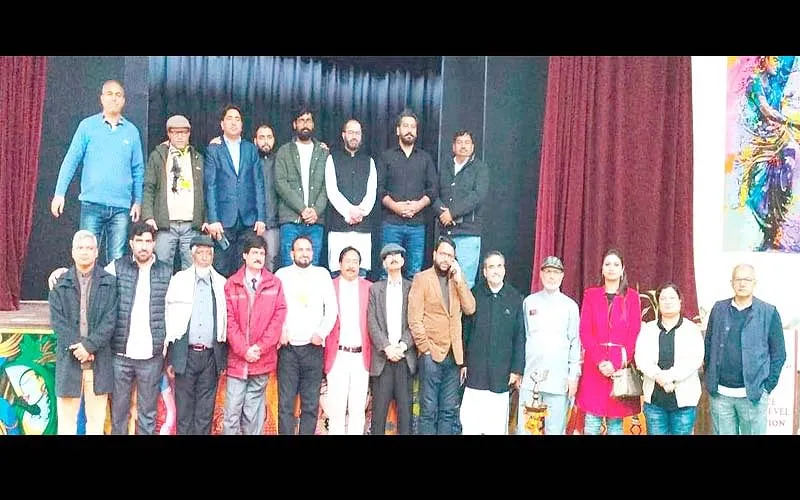Prime Minister Narendra Modi held a virtual summit with the Presidents of the five Central Asian Republics (CAR) on January 27. This was an indication of India’s seriousness in pursuing bilateral and collective ties CARs in keeping with its approach to invigorate relations with its extended neighbourhood. On their part the CAR leaders, through their participation in the virtual summit, demonstrated their interest in building ties with India. Naturally, Modi would have preferred to have the CAR leaders present in India as chief guests for the Republic Day but that was not possible on account of the COVID situation and current difficulties in Kazakhstan.
The virtual summit resulted in a Delhi Declaration which noted inter alia “…the centuries-old close civilisational, cultural, trade, people-to-people linkages between India and Central Asian countries…”. It is true that India and Central Asia have interacted since ancient times. The Kushans were of Central Asian origin and their greatest ruler Kanishka whose empire extended into north-west India has an established place in Indian history. The Kushans became patrons of Buddhism and facilitated its spread into Central Asia, China and Japan. In the fifth and sixth centuries the Huna tribes from Central Asia came into India.
Islam spread in the Central Asian Region beginning with the seventh century and the process continued till the tenth. Central Asian cities, such as Samarqand, became great centres of Islamic learning. However, the Mongol invasions of the thirteenth century devastated the region but gradually the Mongol tribes settled and took to Islam. The Central Asian region impacted on Afghanistan and there was a movement of peoples and invasions from and through Afghanistan into the Indian sub-continent from the eleventh century onwards when first the Afghans and later the Mughals spread their rule in India. Thus, the connection with Central Asia continued. This connection was not always smooth. It was at times violent and traumatic for the Indian peoples but it is part of the historical experience and is therefore also part of the “civilisational, cultural, trade and people-to-people” interaction which cannot be ignored. And, today when India seeks to strengthen its ties with the CARs it has to conscious that several personalities of the Mughal period, such as Bairam Khan, are considered as heroes in some of them.
Two issues which emerged during the summit deserve special focus: connectivity and the Afghanistan situation. The key to enhanced relations between India and the CARs lies through viable and stable land connectivity. As paragraph fourteen of the Delhi Declaration states “The leaders noted that future development of mutual connectivity is essential for enhanced trade and commerce between India and Central Asian countries in the context of their land-locked nature and lack of overland connectivity with India”. The natural route between India and the CARs lies through Pakistan and Afghanistan which borders three of the five CARs—Turkmenistan, Uzbekistan and Tajikistan. Afghanistan is the bridge which connects the CARs to the Indian sub-continent. It is impossible to conceive for now that Pakistan would allow such connectivity via its territory. Hence, Iran becomes significant for connectivity. India recognised that more than two decades ago and committed to developing the Chabahar port in Iran.
In this context the CARs interest in the Chabahar port for “facilitating their trade with India and other external markets” was significant. The decision to establish a Working Group on Chabahar port to “address issues of free movement of goods and services between India and the Central Asian countries” was timely. Realism demands, however, an acknowledgement that connectivity will continue to pose problems to the deepening of ties for the foreseeable future.
China’s Belt and Road Initiative (BRI) represents its push for a China centric world order. It attracted a number of regions through infrastructure projects which were designed to better connect these regions with China. The Central Asian Region is important to China for economic and security reasons. Hence, it is an important area for BRI activity. Now, in recent years many countries are realising that BRI projects have led to rising and unserviceable debts which have led them to permanently lease the projects and also land to China to ease their debt burden. This is leading to a criticism of China which is sensitive on this issue. India has deliberately not joined the BRI because, among other reasons, the China-Pakistan Economic Corridor which is part of BRI violates its sovereignty. In this light it is noteworthy that the Delhi Declaration stated “The sides agreed that connectivity initiatives should be based on the principles of transparency, broad participation, local priorities, financial sustainability and respect for sovereignty and territorial integrity of all countries”. The target of this criticism was unmistakeable.
Both CARs and India have a common and great interest in the Afghanistan situation. For two and a half decades it has been part of their dialogue and some countries and India have also cooperated on the situation in the past. It is therefore natural that the Taliban’s return to power has led to an intensification of India-CARs discussions on Afghanistan. The summit decision to establish a Joint Working Group on Afghanistan at Senior Officials levels manifests this desire. The Delhi Declaration points to a similarity in the basic positions of both sides on Afghanistan, in particular, the desire that it should not become a centre for terrorism and regional destabilisation. Both sides also stressed the need for a “truly representative and inclusive” Afghanistan government but it is unlikely that the Taliban are going away any time soon.
Disclaimer: The views and opinions expressed in this article are the personal opinions of the author. The facts, analysis, assumptions and perspective appearing in the article do not reflect the views of GK.







